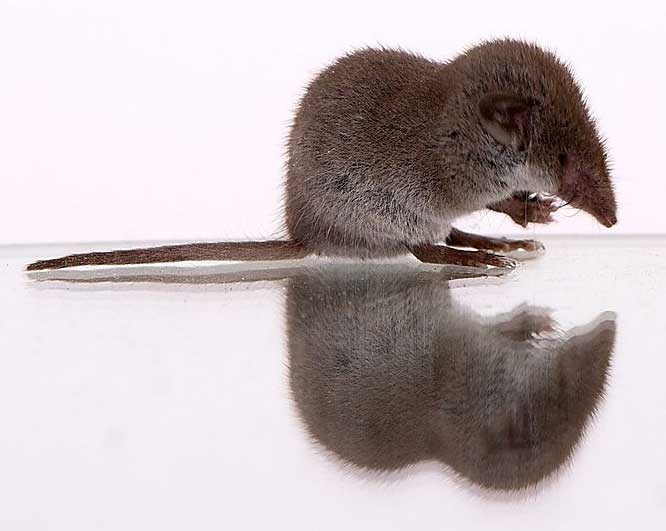Crocidura suaveolens (*) Cladus: Eukaryota Name Crocidura suaveolens (Pallas, 1811) Type Locality: Khersones, Crimea, Southern Russia
* Crocidura ilensis Miller, 1901 type lolality: Kukturuk Ili, W. Sinkiang, (Western Chinese Turkestan) * Crocidura coreae Thomas, 1908 type locality: Min-gyong, 110 miles south-east of Seoul, Korea * Crocidura (Crocidura) coreae: Kishida, 1924
* Crocidura suaveolens on Mammal Species of the World.
The Lesser White-toothed Shrew (Crocidura suaveolens) is a tiny shrew found in Europe, but not on the mainland of Great Britain.[3] Its preferred habitat is scrub and gardens and it feeds on insects, worms, slugs, snails and small mice. The closely related Asian Lesser White-toothed Shrew (Crocidura shantungensis) was once included in this species, but is now considered to be a separate species. Like the common shrew, a female lesser white-toothed shrew and her young may form a "caravan" when foraging for food or seeking a place of safety: each shrew grips the tail of the shrew in front so that the group stays together.[3] The Scilly Shrew The population found on the Isles of Scilly, off the south-west coast of England, is thought to be a sub-species, Crocidura suaveolens cassiteridum, which is unqiue to those islands[3] and is known as the Scilly Shrew. It is unusual in that is found on the islands' beaches. Archaeological remains indicate that it was present on the islands in the bronze age, so it may have been present before the Isles of Scilly became separated from the European continent, or have migrated from the Channel Islands or Europe on-board ships.[4] References 1. ^ Hutterer, Rainer (16 November 2005). Wilson, Don E., and Reeder, DeeAnn M., eds. ed. Mammal Species of the World (3rd ed.). Baltimore: Johns Hopkins University Press, 2 vols. (2142 pp.). pp. 250. ISBN 978-0-8018-8221-0. OCLC 62265494. http://www.bucknell.edu/msw3. Source: WIkipedia, Wikispecies: All text is available under the terms of the GNU Free Documentation License |
|


